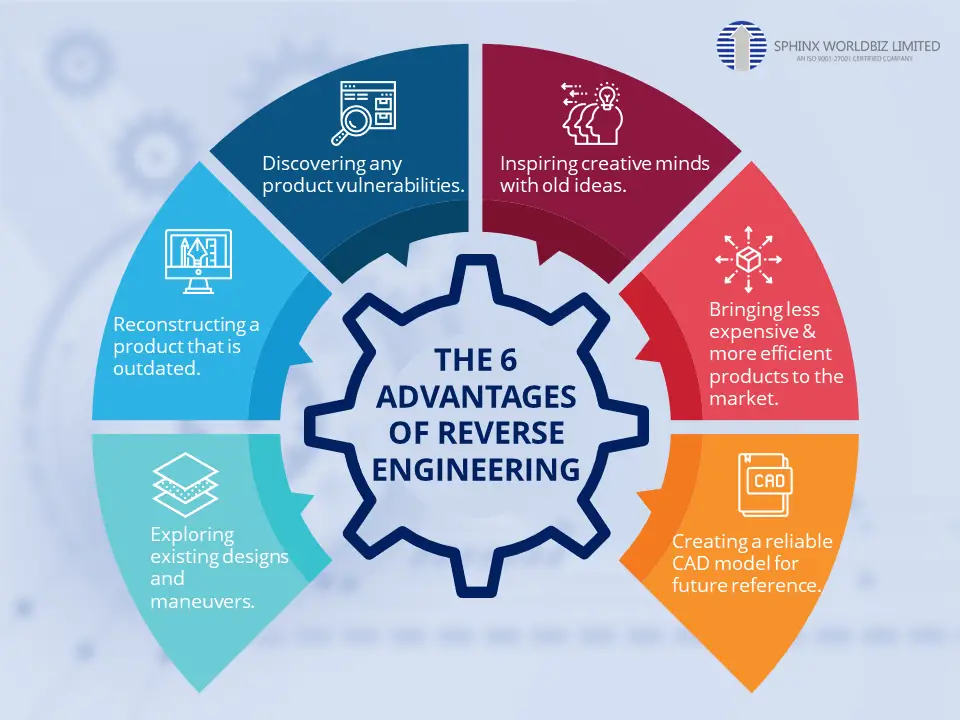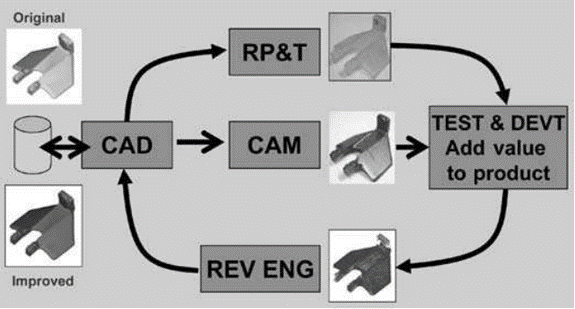Exploring the Boundaries of Reverse Engineering: Comprehending the Un-Reverse-Engineerable

Reverse engineering, the intricate art of deconstructing a system to comprehend its inner workings, has revolutionized innovation and knowledge acquisition across diverse fields. However, this potent technique is not without limitations. Certain elements, due to their inherent complexity or legal constraints, defy reverse engineering attempts. Delving into these limitations provides a deeper appreciation of the technique’s capabilities and challenges.

1. Obfuscated and Encrypted Systems:

Ingenious minds dedicated to protecting intellectual property have devised clever methods to obscure the inner workings of their creations. Obfuscation techniques deliberately scramble the code or algorithms, making them incomprehensible to unauthorized individuals. Similarly, encryption techniques safeguard data and algorithms, rendering them inaccessible without the appropriate cryptographic keys. These protective measures effectively thwart reverse engineering efforts, rendering the systems impenetrable.
2. Complex and Interconnected Systems:
The growing complexity of modern systems, composed of numerous interconnected components, presents a formidable challenge to reverse engineering. The sheer volume of code, intricate interdependencies, and dynamic interactions make it virtually impossible to disentangle and understand the system’s behavior. Attempting to reverse engineer such systems often leads to incomplete or erroneous results, rendering the effort futile.
3. Proprietary and Closed-source Software:
Intellectual property rights play a pivotal role in limiting reverse engineering endeavors. Proprietary software, protected by copyright laws, prohibits unauthorized individuals from reverse engineering the code to understand its inner workings. Consequently, reverse engineering in this context is deemed illegal and subject to legal repercussions. This legal constraint significantly restricts the exploration of proprietary systems and hinders innovation based on reverse engineering.
4. Hardware and Physical Systems:
While reverse engineering typically focuses on software systems, hardware and physical systems also pose challenges. Reverse engineering hardware involves disassembling components, examining their structure, and deducing their functionality. However, the intricate design and inherent complexity of hardware make this process laborious and error-prone. Similarly, reverse engineering physical systems, such as mechanical devices or chemical processes, can be exceptionally challenging due to the inaccessibility of internal components and the specialized knowledge required for their analysis.
Conclusion:
The limitations of reverse engineering illuminate the boundaries of this powerful technique. Obfuscated and encrypted systems, highly complex interconnected systems, proprietary and closed-source software, and the challenges associated with hardware and physical systems collectively delineate the limits of what can be reverse-engineered. These limitations underscore the importance of innovation within defined boundaries, fostering creativity while respecting intellectual property rights and respecting the boundaries of complexity and practicality.# Exploring The Limits Of Reverse Engineering: What Can’t Be Reverse-engineered?
Executive Summary
Reverse engineering can provide valuable insights and innovation opportunities, yet it also has limitations. This article comprehensively explores the boundaries of reverse engineering and identifies five key obstacles: complexity of design, patent protection, proprietary trade secrets, legal and ethical considerations, and lack of resources or expertise. Understanding these barriers and the associated challenges is crucial for organizations and innovators to effectively navigate the complexities of reverse engineering.
Introduction: The Allure and Limits of Reverse Engineering
Reverse engineering, the systematic analysis and reconstruction of existing products, has gained significant traction as a practical means to innovate, improve, and understand complex systems. Nevertheless, there are boundaries to what can be achieved through reverse engineering that often need to be considered in order to proceed. This article will explore the primary obstacles often found in attempts of reverse engineering and the real-world implications of these obstacles.
1. Complexity of Design
The constraints of complex designs can impede reverse engineering:
- Intricate Internal Structure: Analyzing the function and connections of parts embedded within complex mechanisms can be challenging.
- Lack of Documentation: When technical drawings, schematics, or manufacturing specifications are unavailable or incomplete, difficulties in understanding the intended functionality arise.
- Dense Integration: The seamless merger of multiple intricate components within a device can hinder a thorough comprehension of individual component functions.
2. Patent Protection
Patent law establishes barriers for reverse engineering:
- Patent Infringement: Reproducing or studying products still under patent protection can lead to legal challenges if intellectual property rights are circumvented.
- Technological Advantage: Reverse engineering patented technology to gain a competitive edge without authorization from the patent holder is illegal.
- Licensing and Royalties: If a component is both patented and incorporated within a larger design, legal entanglements may arise due to unauthorized integration.
3. Proprietary Trade Secrets
Protecting intellectual property rights poses challenges:
- Confidentiality: Reverse engineering can unwittingly delve into the realms of confidential business information not intended for public knowledge.
- Espionage: Unlawful procurement of secret information renders similar processes obtained illegally or unethically, ranging from trade secrets to proprietary processes, making such practices unacceptable.
- Ethical Considerations: Respecting trade secrets and confidential information is not only a matter of legality but also a cornerstone of fair business practices.
4. Legal and Ethical Impacts
Reverse engineering brings forth legal and ethical considerations:
- Copyright Laws: Violating copyright laws, especially for digital works, during the reverse engineering process can lead to legal repercussions.
- Software Licensing Issues: Reproducing software without appropriate licenses can violate licensing agreements and raise copyright concerns.
- Intellectual Property Rights: Reverse engineering can lead to accusations of intellectual property theft if patented, copyrighted, or trademarked designs are not sufficiently acknowledged.
5. Lack of Resources and Expertise
Despite its potential, reverse engineering faces resource constraints:
- Cost and Time: The process of reverse engineering is often exhaustive and demanding in terms of resources and time, especially with complex innovations.
- Technical Proficiency: Conducting effective reverse engineering often requires specialized knowledge, skills, and equipment not always readily available.
- Software Limitations: Employing computational tools or software for reverse engineering may be limited by the availability, accessibility, or sophistication required for certain tasks.
Conclusion
The boundaries of reverse engineering highlight limitations that warrant careful consideration. The intricacies of design, the legal and ethical frameworks surrounding patents and trade secrets, constraints imposed by copyright laws, and challenges in acquiring necessary resources or expertise can make reverse engineering both challenging and restricted. Organizations and innovators should judiciously evaluate these complexities when pursuing reverse engineering, always seeking alternatives and maintaining ethical standards to achieve positive outcomes while staying compliant with regulations and respecting the protected intellectual property rights of others.
Keyword Phrase Tags
- reverse engineering
- patent protection
- trade secrets
- copyright laws
- resource constraints

This article is a great introduction to the topic, but it could be improved by providing more specific examples of what can’t be reverse-engineered and why. Overall, a good read!
I’m not sure I agree with the author’s claims. They say that it’s impossible to reverse-engineer certain things, but I think it’s just a matter of time before someone figures out how. I’m not an expert, but I’m pretty sure that anything can be reverse-engineered if you have the right tools and knowledge.
I found this article very informative. I had never thought about the limits of reverse engineering before. It’s interesting to learn that there are some things that can’t be reverse-engineered. I’m curious to know what else can’t be reverse-engineered.
I disagree with the author’s main point. They say that it’s impossible to reverse-engineer certain things, but I think it’s just a matter of time before someone figures out how. I’m not an expert, but I’m pretty sure that anything can be reverse-engineered if you have the right tools and knowledge.
So, you’re telling me that there are some things that can’t be reverse-engineered? That’s ironic, because I’m pretty sure that everything can be reverse-engineered if you have the right tools and knowledge.
Oh, really? So you’re saying that there are some things that can’t be reverse-engineered? Well, I have a bridge to sell you.
I’m not sure I agree with the author’s claims. They say that it’s impossible to reverse-engineer certain things, but I think it’s just a matter of time before someone figures out how. I’m not an expert, but I’m pretty sure that anything can be reverse-engineered if you have the right tools and knowledge. Or maybe I’m just a dreamer.
This article raises some interesting questions about the limits of reverse engineering. I’m not sure I agree with the author’s conclusions, but I think it’s a valuable contribution to the discussion.
I’m not sure what to make of this article. On the one hand, I agree with the author that there are some things that can’t be reverse-engineered. On the other hand, I think the author is too quick to dismiss the possibility of future advances in the field.
I’m excited to see what the future holds for reverse engineering. I think it has the potential to revolutionize many industries, and I’m eager to see what new possibilities it will open up.
I’m not sure if I’m ready to believe everything the author says. I think it’s important to be skeptical about claims that something can’t be done. After all, we’ve seen time and time again that what was once thought to be impossible is now commonplace.